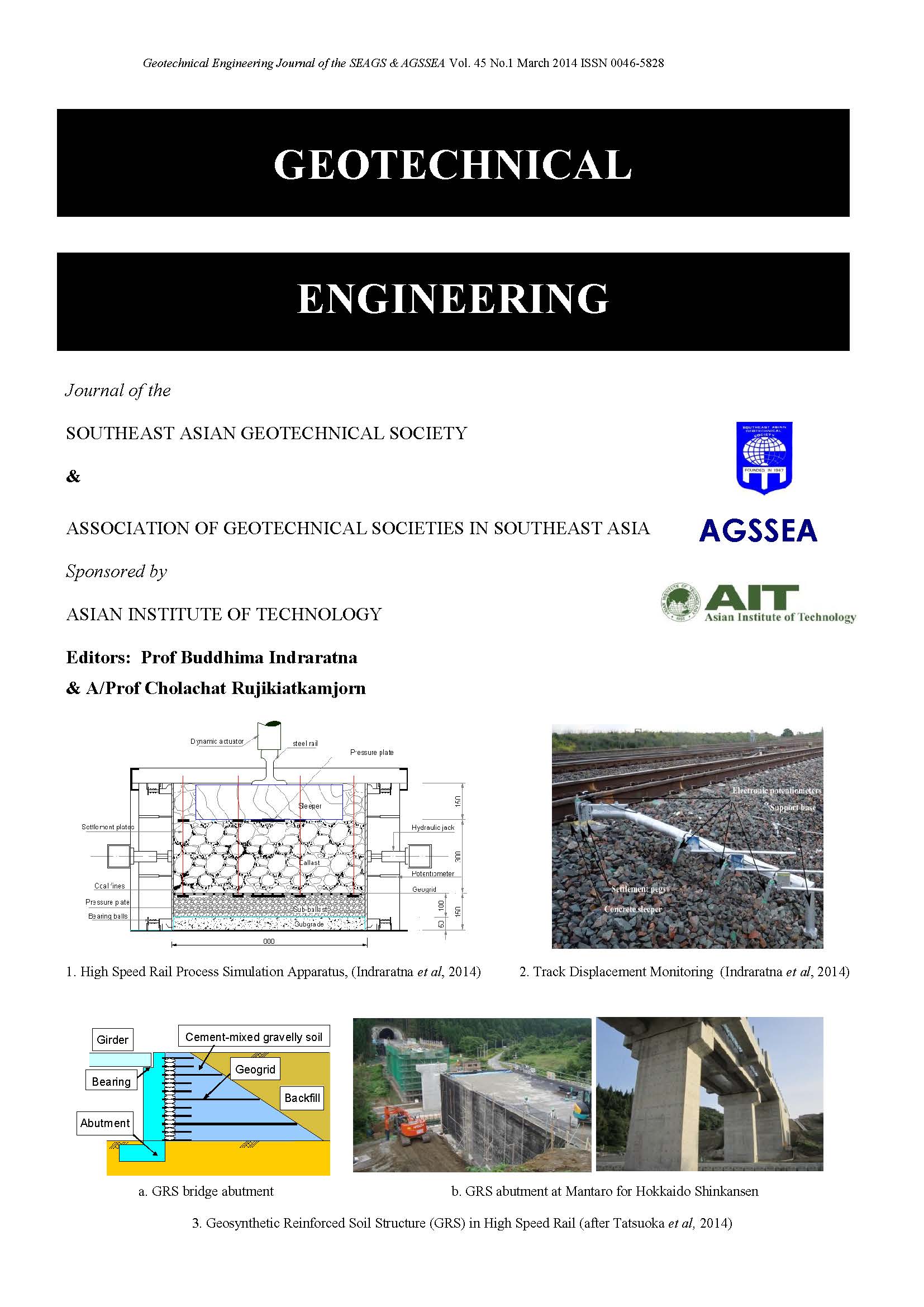Railway Track Transition Dynamics and Reinforcement Using Polyurethane GeoComposites
Main Article Content
Abstract
The change in railway track stiffness from ballasted track to a fixed track structure, such as concrete slab-track or a fixed bridge deck, can cause significant track geometry issues, particularly for high-speed and heavy haul. The change in track stiffness generates additional track forces at the ballast interface in an area that can be very difficult to maintain, due to the tamper’s inability to lift the track on the fixed geometry side. In this paper the transition problem is investigated using DART3D, a 3-dimensional finite element program that can simulate the train-track coupling behaviour over the transition. The application of a 3-dimensional polyurethane reinforcement technique is then presented as a designable means to control the ballast migration behaviour in the transition zone to reduce dy amic effects from problems like hanging sleepers. The paper then discusses the impact of using this type of ballast reinforcement through numerical simulation. Application of the technique at Tottenham Hale Junction UK is presented to illustrate the application of the system to real track transitions.
Article Details

This work is licensed under a Creative Commons Attribution-NonCommercial-NoDerivatives 4.0 International License.
Copyright © 2019 Association of Geotechnical Societies in Southeast Asia (AGSSEA) - Southeast Asian Geotechnical Society (SEAGS).


